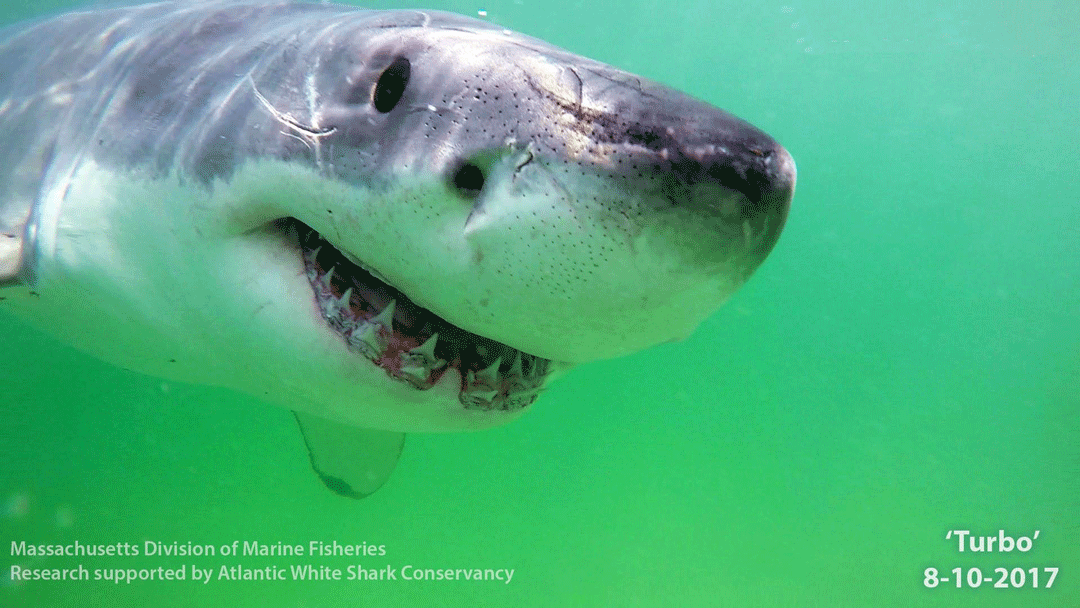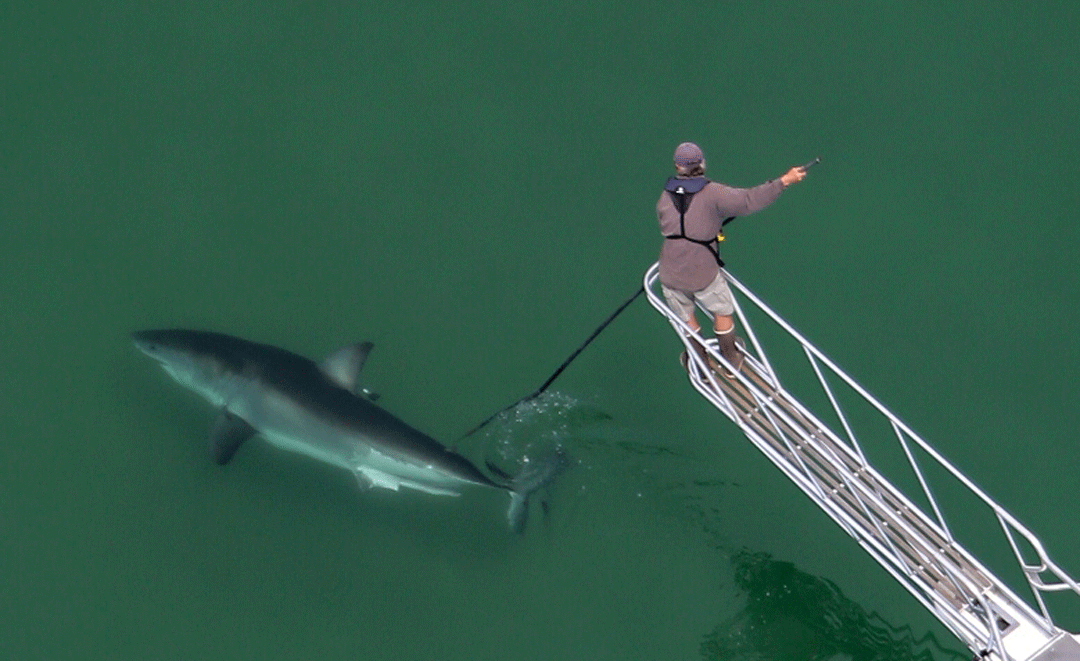Playing tag and seek with white sharks on Cape Cod
The strong start to our 2019 white shark research season continued in August and September off Cape Cod. During these two months, we tagged 21 white sharks bringing our total to 36 for the season. This is by far the most white sharks we have ever tagged in a single season off Cape Cod, and we still have the month of October in front of us. All of these sharks were tagged with acoustic transmitters, which allow us to better understand where and when white sharks prey upon grey seals in the region. These tags went out on a broad size range of sharks, which included juveniles, subadults, and adults of both sexes.

Photo © Greg Skomal | Atlantic White Shark Conservancy
I am also excited to report that, for the first time, we tagged four white sharks in Cape Cod Bay, which is the large bay formed by the northern shoreline of Cape Cod. Up until this year, all of our tagging effort was directed at white sharks along the Outer Cape, which is the eastern shoreline that runs north/south. In recent years, we have been receiving reports from fishing charters that white sharks were snatching striped bass from their lines while fishing in the Bay (see here). In response to these reports, we expanded our research into the Bay in 2019 to identify the size structure, movements, and feeding habits of these sharks. Although preliminary, it appears that most of the white sharks in the Bay are smaller juveniles targeting fish on the shallow shoals, which are not close to shore. This is in sharp contrast to the larger sharks along the Outer Cape that are feeding on grey seals close to shore.

Photo © Greg Skomal
In addition to the acoustic transmitters, we also deployed three more acceleration data loggers in August and September, bringing our total to five for the season. Both the deployment and retrieval of these tags can be a bit challenging. Our goal is to study the natural behaviour of white sharks, so we make every effort to use the least invasive tagging technique, which means that we don’t want to hook, fight, or handle the sharks in any way. To do this, we place the tag on the shark while it is free-swimming, which depends heavily on ideal weather conditions, a well-trained crew, and a very cooperative shark. Once the shark is tagged, it goes about its business and the tag collects thousands of data points over a day or two before the galvanic link dissolves and the tag is released. Of course, we hope that the shark does not travel very far over those days and, for the most part, we have been able to retrieve our tags within 10 miles of the tagging location. However, our last tag starting pinging about 50 miles south of the Cape at a time when a tropical storm was passing through our offshore waters. With my collaborator Megan Winton of the Atlantic White Shark Conservancy and Captain Diogo Godoi, we ventured out into 3-4 meter seas to ultimately find and successfully retrieve this treasure trove of data.

Photo © Greg Skomal
The video and data from these tags provide critical insights into the foraging behaviour of white sharks around Cape Cod. With the field season still in full swing, we won’t have any time to analyze these data until we hang up the tagging pole and boots in November. But we are very excited to be moving forward with our research at such a high pace, and this is made possible by the financial support of the Save Our Seas Foundation and the Atlantic White Shark Conservancy.
